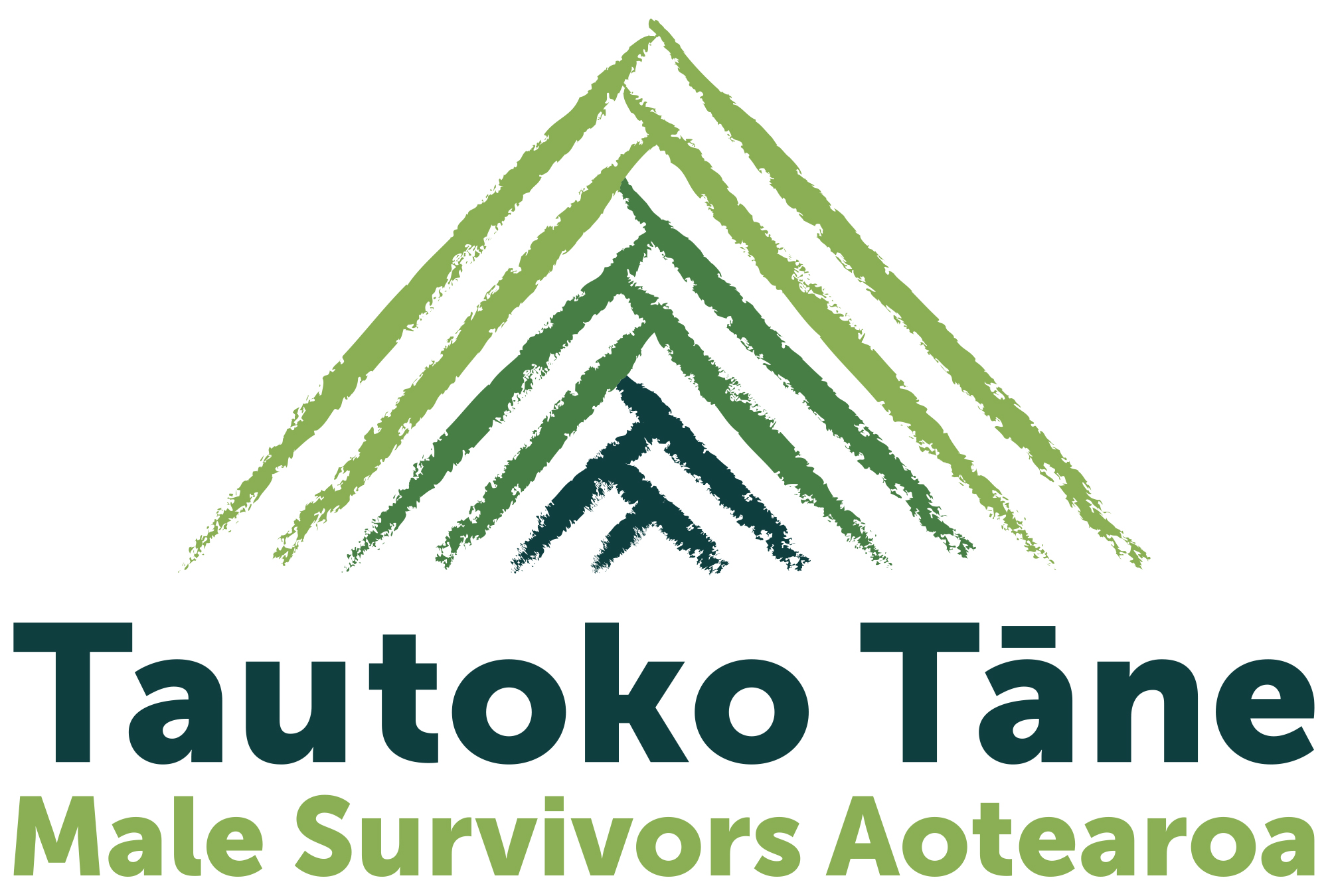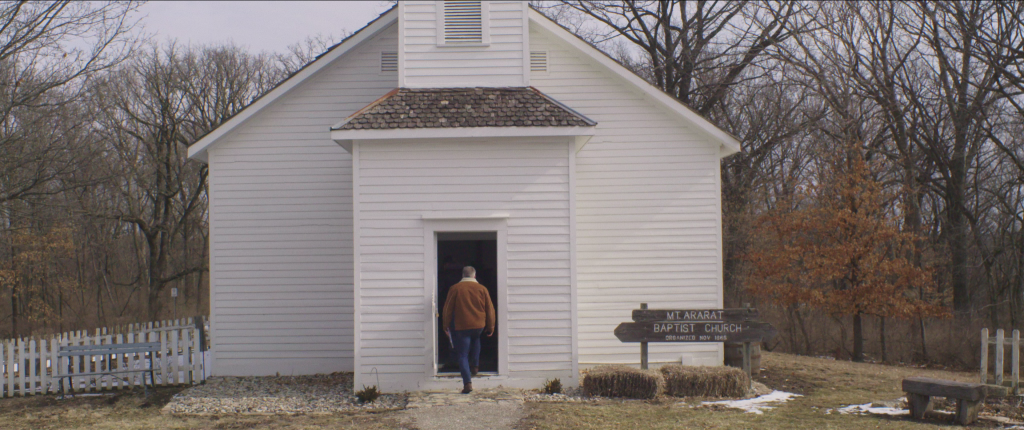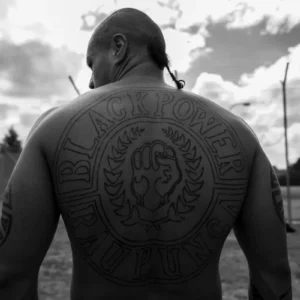Hyperallergic speaks to director Robert Greene and three survivors of sexual abuse by Catholic priests about their new film Procession.
Published in Hyperallergic
In Kansas City, six men who were sexually abused by Catholic priests as children collaborate with a film crew to tell their stories — but not in the way you might think. They don’t act as talking heads in the manner of a traditional documentary, nor is this a fictional adaptation of their lives. Rather, Procession centers the men as they embark on creative interpretations of their experiences. Inspired by drama therapy and supervised by multiple therapists, the production sought to let the men use filmmaking to seek catharsis and healing, and reclaim some measure of agency they felt had been taken away from them by their abusers and the church.
Joe Eldred, Mike Foreman, Ed Gavagan, and Michael Sandridge each craft dramatic sequences inspired by their pasts. For examples, Foreman wants to reclaim his humiliating experience before an independent review board which called him “not credible,” while Eldred wants to exorcise the terrible dreams he’s been having. Dan Laurine, an experienced location scout for media production, uses the process to battle his lingering hesitation to visit places of worship. Tom Viviano, legally forbidden from making any public accusations, simply wants to help the others however he can. Helping them is director Robert Greene, who is well versed in making heavily collaborative films which interrogate the nature of performance. Bisbee ’17, for example, had an entire town recreate a dark episode in its history, and at the same time sought the participants’ thoughts on that history. Procession deepens that practice by giving its subjects a high level of control in shaping where it goes. This is part of an exciting wave of documentaries exploring the role of performance in therapy and healing, seen in films like Srbenka and Island of the Hungry Ghosts. The approach’s implementation here marks its most high-profile appearance yet, and the producers hope it can serve as a guiding example for other creators.
In the spirit of the film’s process, I wanted to speak both to Greene and some of his collaborators about making it. I had one WhatsApp call with Greene, and one Zoom call with Foreman, Viviano, and Eldred. These two interviews have been combined and edited for brevity and clarity.
Hyperallergic: Did the approach for this film come naturally out of this subject matter, or was this the right subject for this kind of film?
Robert Greene: I think this is what my films have been building toward for a long time. It actually comes out of a feeling of failure, a little bit. We had a Q&A for Bisbee ’17 where someone asked if we had a therapist on set when we were doing the recreation of the deportation. My answer was, ‘No, we didn’t really need it.’ Then I felt completely stupid because I was just wrong. My sister-in-law Mary told me to read The Body Keeps the Score, which is about how trauma is literally stored in our bodies. The way to work through trauma is not necessarily just talking about it, but also doing things like role play. I realized that for years, I was doing unlicensed drama therapy in my films without realizing it.
That led me to think more deeply about these things, and ask who these practices could work with. I thought about how I could never watch or listen to any story about pedophiles abusing children, priests or otherwise. There are deep-seated reasons for that, but I realized that by not listening, I was contributing to the silence that leads to the shame and harm that victims feel. That led me to find the press conference that opens the film. I was emotionally blown away by Michael [Sandridge], Mike [Foreman], and Tom [Viviano]. We reached out to Rebecca Randles, the lawyer who’s representing them. Then I went to a conference held by the North American Drama Therapy Association. In a totally serendipitous moment, they were meeting in Kansas City. It was hosted by Monica Phinney, who ended up being our drama therapist. I pitched the original version of the idea to a whole room full of very intimidating and serious professionals, who basically tore it apart and told me all the ways I didn’t know what I was doing. It was Rebecca who knew the guys and what they needed. Then it was Monica who knew the limitations of my ideas and let us start the conversation with the guys after Rebecca connected us.
Mike Foreman: Rebecca notified me about [the project], and I was all in before I even hung up the phone. The church used the statute of limitations against me for three and a half excruciating years, to deny me my day in court while talking to the public about healing, mercy, and empathy. I felt like I had absolutely nothing to lose.
Joe Eldred: I was pretty skeptical when Rebecca contacted me. I didn’t have much of a warning. I had changed my numbers and my email. I was shutting people out again. I was just done with life, really. And on a whim, I checked my old email and saw she’d been trying to get a hold of me. I was a last-minute addition. I almost missed out on all of it. I was skeptical, but open to seeing where it could go. It sounded fun and different, and I thought it might help people like me, who had nowhere else to turn. Ultimately, I believe that’s the project we ended up creating. It’s been really good for me, and I think it’s been good for the other guys as well.
Tom Viviano: I jumped in right away. I had a lot of the same feelings Mike did, that I had nothing to lose and everything to gain. I’ve been put through the wringer with the church, and there were so many roadblocks. It’s like, ‘One more chance, give it another chance.’ There was no hesitation. And it’s been a hell of a ride, that’s all I can say.
H: What changed from the initial conception of the film?
RG: My first thought was doing drama therapy onscreen. But drama therapy is a very rigorous process. One of the first lessons that I learned was that there’s a huge difference between clinical therapy work and something being therapeutic. The therapists were concerned about the role of the camera and editing in a therapy space. Filmmaking has all kinds of needs — building tension and storytelling and having characters. The editing and imposed narrative frameworks have no place in a therapy environment.
My original idea was something like showing 20 minutes or so of a fictional film, and then revealing to the audience that it was made by child sex abuse survivors. The therapists were just like, ‘Well, the problem is the creation of that film.’ That helped us understand that collaborating on making these scenes was the real point, and that having a drama therapist there as a consultant and guide was more important than doing actual drama therapy.
TV: We’d never had therapy like this, not until Monica came onboard. I’ve been going to therapy since 2012. I meet with a gentleman who specializes in boys who were abused by Catholic priests. I really find that very sad, that this area is big enough for there to be specialists in it.
JE: The only therapy I’d had before was normal counseling and EMDR. Drama therapy was new to me as well. It was interesting and exciting. I just had to give myself permission to let the walls down and explore whatever came my way. It ultimately opened up a lot of thought processes, and was very healing over time.
MF: It’s the first time I feel like I’ve even been heard. There’s a scene we shot that didn’t make it into the movie — it was pretty funny. Robert gave me one of those big megaphones, like cheerleaders use. I was standing over the independent review board and yelling right in their faces. I had to try to be heard. That’s how I’ve felt.
H: How were the collaborators brought together?
RG: Rebecca cast the film. She had been working with these men for a decade, sometimes longer. I wanted to work with Michael, Mike, and Tom because they were in that press conference, but she decided whether they could and should do it. Frankly, I would’ve never felt comfortable enough to pick the guys myself, or to make the decision for someone that they couldn’t keep going. One of the methods for the production was that pretty much every time we filmed, we framed it as if it could be the last time we got together. From the first meeting, we made clear that the point wasn’t ‘What are we going to do?’ but ‘What can we do if we want to?’ or maybe, ‘We just don’t do this.’ That was a very important, that there was always a door. The guys needed to tell us what they needed. It was important that Rebecca took those first steps for us. The trust you see built is the trust that they have in her.
H: What would have happened if someone had taken the door out?
RG: There wasn’t really any contingency. I knew that first meeting could be the last, and I was comfortable with that. If the answer at the end of the day was that it wasn’t the right thing, I think we would’ve figured that out. At that first meeting, as you see in the film, Ed [Gavagan] says, ‘I’ve never been in a room with this many other survivors before.’ We knew that day was helpful. Bringing survivors together is not a radical concept, of course. A lot of group therapies set frameworks that work for people. These men had been isolated by their abuse, isolated by the Catholic Church, isolated by the court system, and then they were brought together to talk. I knew that was going to be helpful. If we decided not to take any more steps forward, that was fine.
MF: Robert really put me at ease when he said in one of the meetings, ‘When this is done, anything that you do not like about yourself in the movie, any scene or comment, we’ll take it out.’ That made me feel like I wasn’t just in it, that I had a real say in it. I looked at that like a safety net.
JE: He gave us complete control. Even until the very end of the filming, after everything else was done, I had total control to stop, take a step back, say no, and walk away. And that gave me the power to keep pushing myself farther and harder than I would have if Robert was trying to get me to do something. I don’t think he really needed to push me to do anything because of that power he allowed me to have.
TV: I personally was onboard with pretty much whatever they wanted, whether I felt comfortable or not, because this whole topic is uncomfortable. Who even knew how we were supposed to feel in the first place? There were moments, yes, where I felt uncomfortable, but I never had any doubts. Never had any problem with saying, ‘Let’s just push forward.’ Because I didn’t know what feelings I was going to have, and I’ll be honest with you, I wouldn’t trust my feelings in moments like that. So I just went with it, no turning back. And I think everything worked out very well.
H: Were there any moments where things got too real?
RG: It was too real the whole time. This is really important, I told them from the beginning that we would turn the cameras off if they asked, but there was never a moment when anyone asked us to. It’s not because there weren’t any scary moments. By the time we were filming, everyone was aware that the reason we were doing it was because it was being recorded, that the camera itself was an active part. There were moments where we needed to process what was going on together, and some are in the film and some aren’t. Some things are not to be shared. We had to make choices in editing about what to share. That’s where the safety truly was. The confidence I had in the film was really my confidence in the editing, especially because I was working with the guys on the edit too. They were watching many cuts and giving feedback on how to balance all this.
MF: The last thing I wanted to do was stop. It was great for me to have any voice at all. I can’t stress enough how filthy and despicable the Catholic Church really is. A Catholic archbishop lying right through his ass about his own sincere prayer in a letter he wrote me, all while he was using the statute of limitations against me. When Spotlight came out, Kansas City arch-filth-rat Joseph Naumann organized these HOPE services. HOPE stands for ‘healing our parishes through empathy.’ All that was announced when I was two weeks away from my second dismissal hearing.
TV: There are so many lies the Catholic Church has told. But that just ingrained in us the spirit to fight. I shared this in a recent Q&A: I’m from St. Louis; I’m the local guy here. My abuse lasted from third grade to eighth grade, by at least eight priests. Everywhere I turned, I was told, ‘You can’t say eight priests. That’s too many. People won’t believe you.’ And I’m like, ‘Fuck you. I’m the only one telling the truth.’ I got a story to tell, and I’m going to tell it. This may be my only 15 minutes of fame, and I’m going to use it.
H: How were the procedures for filming developed to ensure the guys would feel safe enough to participate?
RG: We went into that first meeting with the idea that we would be building these processes. Rebecca, Monica, and Sasha Black, who works with Rebecca and has been the guys’ therapist for many years, all played super important roles. I say everything was filmed, but the truth is that a lot of conversations had to happen with no cameras around before that, so we could make sure everyone was safe. There were times during filming that we had to walk away, take breaks, and those processes were built into the production.
MF: We had several meetings about it while they were still trying to get the money for the project. I think it was about a year before we started filming.
JE: There wasn’t much prep time for me. From when I first got the email until when we went to Kansas City — remember, guys, when we went to Rebecca’s horse farm and all that? — I had two days to prepare. It was just jumping in headfirst.
TV: I couldn’t tell my story directly because it’s still in court, and so they told me I could help act in the others’ stories. When I was approached about putting on — I’m sorry — the pig suit, which is what I call the priest clothing, it took me a long time to emotionally accept I could do it. To this day, if I see a man in a collar, the first thing I want to do is punch him. And that’s not a good thing. I struggled with that emotionally, physically, every which way. But I got prepared, and then I was ready to go.
RG: We learned early on that treating survivors like children was the exact opposite of what we needed to do. People like this, those abused as children, aren’t just abused by the perpetrators, but also by the system that made them feel like they were to blame. The system used rituals and symbols and spaces to control them, to make them feel small and take their power away. When talking about possible retraumatization, a lot of times the truth is you’re making yourself feel better because you weren’t traumatized in the way these guys were. Michael talks about it often: ‘I could be retraumatized by a smell in a grocery store.’ We had therapists to make sure we stayed on the rails. As long as we had that, we needed to do anything and everything we could to give the guys power, not take it away. I was not abused the way they were, so a lot of my worries were projecting my own anxieties on them. I needed to learn to trust them.
H: Are there any established standards for using therapists on documentary productions? Or did you have to discover such best practices yourselves?
RG: We had to feel a lot of our way through. I would say that breathing before you roll camera is one of the big things we learned about. I have no idea what I’m doing next, but I do know I would love other documentary filmmakers to see the potential of having a therapist on set. Literally just breathing before you roll camera, and then de-rolling after you stop filming. De-rolling is a process built into the drama therapy process, basically getting yourself out of the role. Whether you’re acting, reenacting, or just doing an interview about difficult subject matters, you can relive traumatic events. We’ve seen this before; just go read interviews with survivors about participating in documentaries. The truth is that the process of being interviewed is very much like a deposition or an independent review board. And those processes are incredibly traumatizing for survivors. The entire court system has had to question its methods because of how traumatizing it can be. So building up to an interview and then de-rolling after could be very helpful for filmmakers.
Something that should have been a red flag to me was that so many times in my career, participants in our films have said to me, ‘That was so therapeutic.’ ‘That was almost like therapy.’ ‘Wow, you’re like my therapist.’ That meant that I was serving a role those people needed someone else for. I am a filmmaker; that’s my concern. I needed to be more aware of that. Now I want to advocate for other filmmakers to be aware of how much overlap making films has with actual therapy processes, and you’ve got to be careful with that, because you could hurt people, period.
H: Has there been any discussion about using these experiences to create a report or suggestions for official guidelines for filmmakers?
RG: Yeah. Monica and I working on that for what we hope is the next phase of the project. The film’s coming out on Netflix. It’s going to be seen by a lot of people. Then we hope to have an impact campaign. Part of that will be advocating for is just what you asked about. This is all happening so quickly that the words you used are probably the most direct I’ve heard describing what it is — some sort of report. We absolutely want to engage with both the therapy and documentary communities.
H: For the participants, what was the creative process like?
TV: I’d never had any experience acting, in front of a camera or anything else. I was ready to take on any role they wanted me to, just so I could be a part of it. It was a great experience.
MF: I originally wrote my story after I lost my appeal in the court, and then put it on the internet. And then I got involved in this movie and got to tell my side of what happened with the independent review board. For my scene, it was actually Robert’s idea for the 11-year-old me to walk out the front door of the house where I was assaulted and then go to the board where the grown-up me is, which I thought was an awesome idea.
JE: It was. That worked very well. I really liked that too. For me, I don’t know show business, any of that, so I did some research. I learned about storyboarding, and I used cutouts to make my own storyboards about my nightmares. Ultimately it was not used because I did not feel the need to film that. Meanwhile there was this other story growing, about writing a letter to my 10-year-old self. It was there all along, I just didn’t see it building. When I left the nightmare idea, here this was laid out perfectly. I just had to find the strength to reconnect with that boy and write that letter.
Procession opens in select theaters November 12, and will be available to stream on Netflix starting November 19.
By Dan Schindel
Published in Hyperallergic
11 Nov 2021




